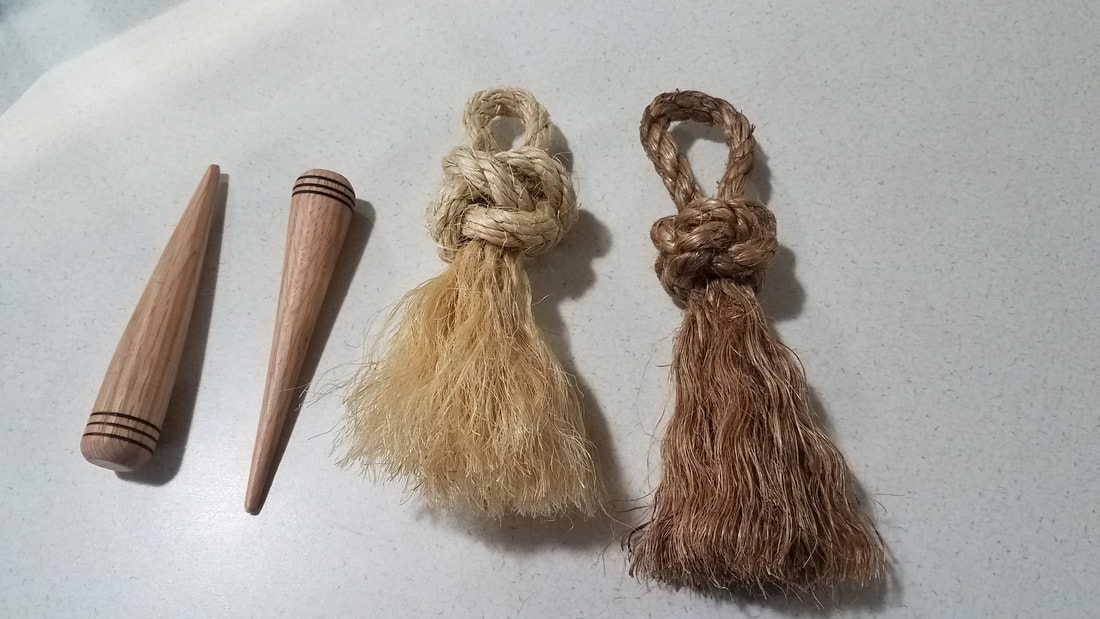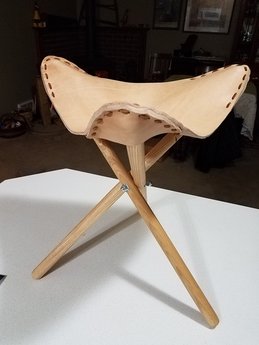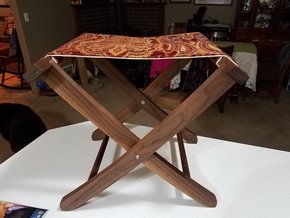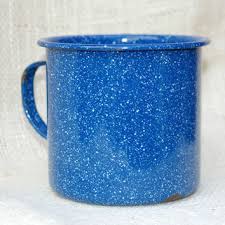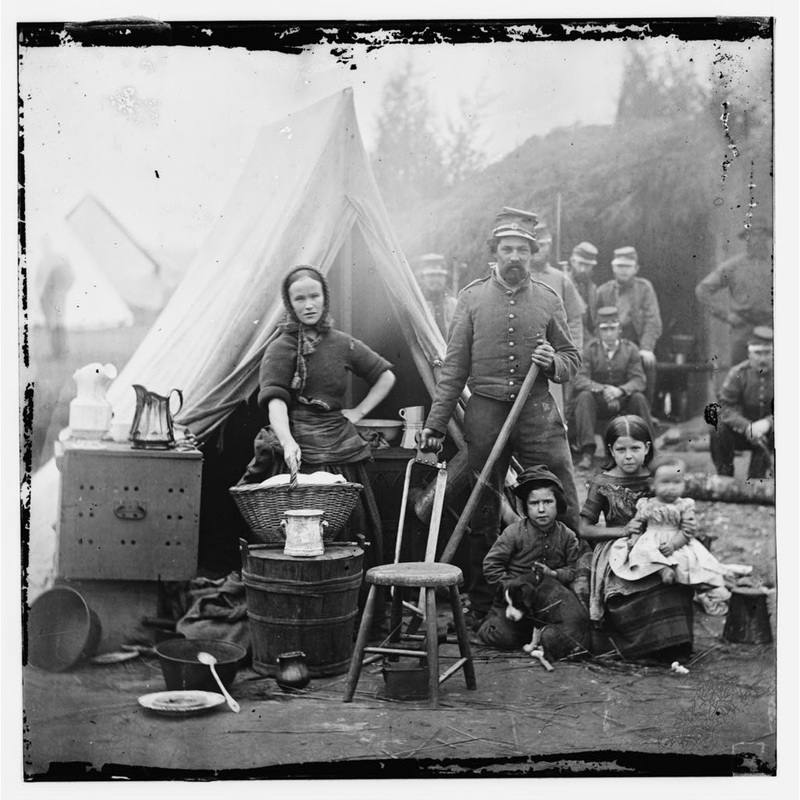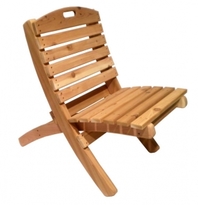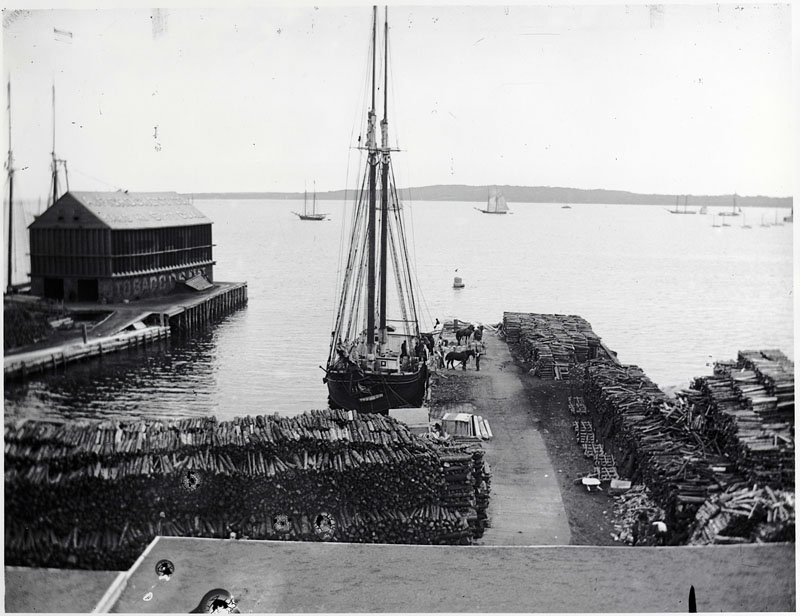By 1st Sgt. Koepp
Mrs. 1st Sgt. has been busy researching period sewing resources and hand sewing a cot quilt. Among the many books she's purchased is "Fanciful Utility." This book is full of detailed information and patterns for various types of housewives and needle books. One item, you'll also see in the photo, are patterns for various types of thread winders. I photo copied the patterns and cut them out of 1/16" basswood from the craft store on my scroll saw. This project was just one of many accessible projects to improve a sewing impression.
The other photo is an original housewife I purchased for my wife on Ebay. It was only $70 and came stocked with original, unused Civil War buttons, thread, a pack of needles, scissors, and more. I wanted to illustrate this type of housewife, because the book also discusses the commonality of the kits with the tin bobbin holder. This pattern is rare in the hobby and thought it would be worth sharing. Another item in the photo, that didn't come with the kit, is an original thimble that was dug from a Civil War camp. The brass thimble only cost $7 on Ebay and took only a little time to clean up.
Hopefully these resources will help your research into period sewing kits and illustrate the accessibility of period items.
Mrs. 1st Sgt. has been busy researching period sewing resources and hand sewing a cot quilt. Among the many books she's purchased is "Fanciful Utility." This book is full of detailed information and patterns for various types of housewives and needle books. One item, you'll also see in the photo, are patterns for various types of thread winders. I photo copied the patterns and cut them out of 1/16" basswood from the craft store on my scroll saw. This project was just one of many accessible projects to improve a sewing impression.
The other photo is an original housewife I purchased for my wife on Ebay. It was only $70 and came stocked with original, unused Civil War buttons, thread, a pack of needles, scissors, and more. I wanted to illustrate this type of housewife, because the book also discusses the commonality of the kits with the tin bobbin holder. This pattern is rare in the hobby and thought it would be worth sharing. Another item in the photo, that didn't come with the kit, is an original thimble that was dug from a Civil War camp. The brass thimble only cost $7 on Ebay and took only a little time to clean up.
Hopefully these resources will help your research into period sewing kits and illustrate the accessibility of period items.
